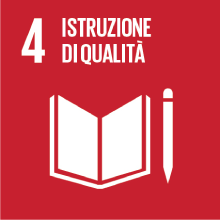BUSINESS HISTORY OF EASTERN EUROPE
- Anno accademico
- 2024/2025 Programmi anni precedenti
- Titolo corso in inglese
- BUSINESS HISTORY OF EASTERN EUROPE
- Codice insegnamento
- LM6550 (AF:458604 AR:288864)
- Modalità
- In presenza
- Crediti formativi universitari
- 6
- Livello laurea
- Laurea magistrale (DM270)
- Settore scientifico disciplinare
- SECS-P/12
- Periodo
- I Semestre
- Anno corso
- 2
- Spazio Moodle
- Link allo spazio del corso
Inquadramento dell'insegnamento nel percorso del corso di studio
Gli studenti sapranno riconoscere i principali approcci teorici e le metodologe di ricerca della business history; il corso si soffermerà, in particolare, sulla storia degli investimenti delle imprese multinazionali in Europa Centro - orientale e orientale, e sulla particolare evoluzione storica delle imprese dell'area. Attraverso il prisma dell'impresa e della complessa interazione dell'organizzazione con il contesto, gli studenti potranno osservare i principali processi di cambiamento politici e economici del Novecento. La storia delle imprese verrà inserita nella più general ricostruzione della storia economica dell'area e verranno presentati agli studenti diversi casi studio.
Il corso si articola seguendo tre partizioni cronologiche: Il periodo interbellico (1918-1939); Il periodo del socialismo di stato (1945-1989); il periodo della trasformazione post- socialista (1989-2000).
Risultati di apprendimento attesi
2) gli studenti riconoscono i tratti distintivi della storia delle imprese dell'area dell'Europa centro orientale e orientale rispetto all'evoluzione storiche delle imprese dell'Europa occidentale e statunistensi
3) gli studenti sono in grado di ricostruire le particolari traiettorie storiche delle imprese dell'area e gli snodi principali
4) Gli studenti sono in grado di commentare e dibattere su casi di studio e contestualizzarli correttamente nel loro periodo storico
5) gli studenti sanno discutere in modo critico approcci e uso delle fonti nelle letture relative alla storia economica e d'impresa dell'Europa centro orientale e orientale
Prerequisiti
Contenuti
1. Presentation of the course content, requirements, and of assessment methods. Basic conceptual distinctions.
2. Business History. Approaches and methods
3. Multinationals and firms in 20th and 21st century
Part II The Interwar Years
4. Business History in Central Eastern Europe in the Interwar Years (cartels and multinationals)
5. The Soviet Union. The firm in the planned economy from Tzarism to Stalinism
6. Ford (and the other Multinationals) in the Soviet Union (1920s-1930s)
Part III The Cold War and the East-West economic relations
7. The Soviet Model of Management and the Sovietization of CEE
8. COCOM, Sanctions and East-West trade: stages and channels
9. COMECON integration
10. Italian companies and Socialist CEE
Part IV. 1989 and the post socialist world
11. The 1989 in CEE: privatization and industrial integration
12. The Economy of Favor in Russia
13. The transition Period in Russia. The emergence of the oligarchs
14. The transition Period. Post- socialist business transformation and Markets
15. Exam simulation
Testi di riferimento
Reading unit 2: Amatori, Franco, Colli, Andrea. 2011. “Theories of the Firm” in Business History. Comparisons and Complexities, Routledge, p. 33-52.
Reading unit 3: Jones, Geoffrey. 2005. “Frameworks” in “Multinationals and Global Capitalism”, Oxford University Press, p. 4-35.
Reading unit 4: Morys, Matthias. 2021. “Economic Growth and Structural Change in Central, East and South East Europe in 1918-1939” in Morys M. (ed.), The Economic History of in Central, East and South East Europe, p. 161-187.
Reading unit 5: Eloranta, Jari. 2021. “Between Disintegration and Convergence. 1918-39” in Morys M. (ed.), The Economic History of in Central, East and South East Europe, p. 216-242.
Reading unit 6: Link, Steven, 2020. “The Soviet Auto Giant” in Forging Global Fordism, Princeton University Press, p. 90-130.
Reading unit 7: Yudanov, Andrei Yu.. 1997. “USSR: Large Enterprises in the USSR—The Functional Disorder,” in Alfred D. Chandler, Franco Amatori, and Takashi Hikino (eds.). Big Business and the Wealth of Nations, Cambridge, U.K., 395–432.
Reading unit 8: McGlade, Jacqueline. 2005. COCOM and the Containment of Western Trade and Relations in Eloranta, Jari and Jari Ojala, East-West Trade and the Cold War, JYVÄSKYLÄN YLIOPISTO. p. 47-62 OR Canestrini (2021): Economic sanctions and new strategies in East-West economic relations in 1981–1982, The International History Review.
Reading unit 9: Richter, Sandor Economic Integration within Comecon with the Western Economy in Morys M. (ed.), The Economic History of in Central, East and South East Europe. p. 324-351.
Reading unit 10: Fava, Valentina. 2018. “Between Business Interests and Ideological Marketing: The USSR and the Cold War in Fiat Corporate Strategy, 1957– 1972,” Journal of Cold War Studies 20, no. 4 (2019): 26–64.
Reading unit 11: Voskoboynikov, Ilya. 2021. Economic Growth and Sectoral Developments during the Transition Period. 1990-2008 in Morys M. (ed.), The Economic History of in Central, East and South East Europe, Routledge, p.383-412.
Reading unit 12: Ledeneva, Alena V. Russia's economy of favours: Blat, networking and informal exchange. Vol. 102. Cambridge University Press, 1998. Chapter 2: Understanding blat.
Reading unit 13: Guriev, Sergei and Rachinsky, Andrei. 2005. The Role of Oligarchs in Russian Capitalism. Journal of Economic Perspectives, p.131 - 150
Reading unit 14: Jones, Geoffrey; Comunale, Rachael and Kate Lazaroff-Puck. 2017. “Boris Berezovsky, Vladimir Putin and the Russian Oligarchs” (Harvard Business School Case No. 317-005, Mar. 2017, rev. Dec. 2019)
Readings will be available in Moodle
Modalità di verifica dell'apprendimento
2. Esame finale: orale sulle letture e le slide del corso.
Modalità di esame
Metodi didattici
Lingua di insegnamento
Obiettivi Agenda 2030 per lo sviluppo sostenibile
Questo insegnamento tratta argomenti connessi alla macroarea "Capitale umano, salute, educazione" e concorre alla realizzazione dei relativi obiettivi ONU dell'Agenda 2030 per lo Sviluppo Sostenibile


